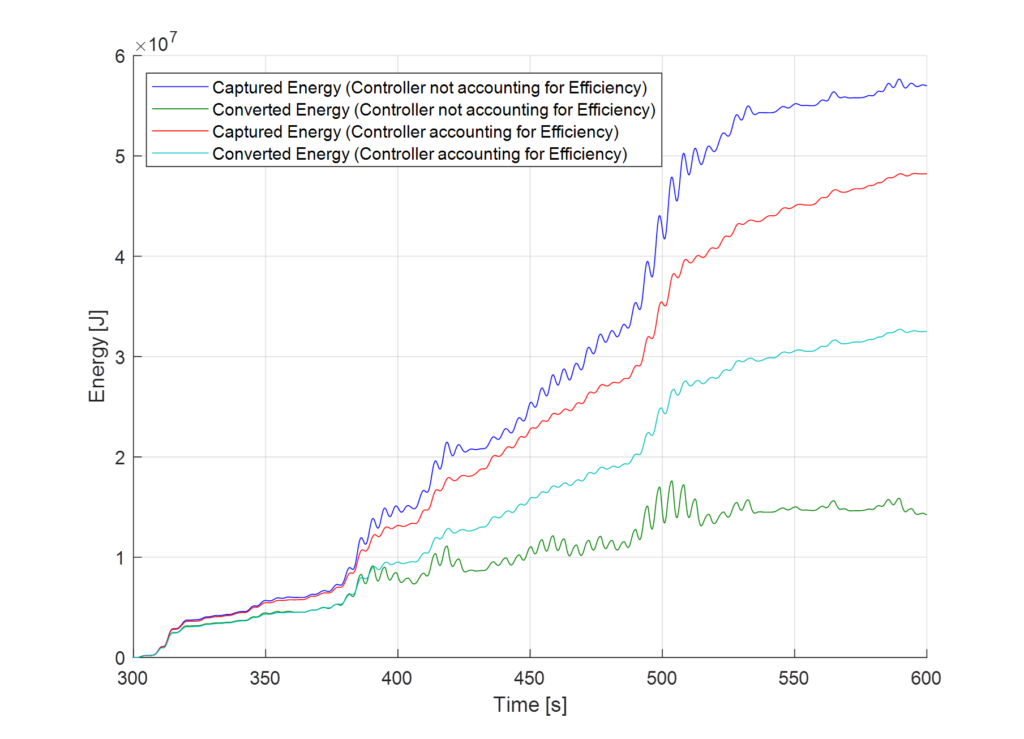Over the years there have been many different control approaches for Wave Energy Converters (WECs), from very simple controllers that provide a force proportional to the speed (linear damping) to more complex controllers that contain a detailed model of the WEC within the controller (Model Predictive Control or MPC).
The focus of the overwhelming majority of these controllers has been to “capture” as much energy as possible from the waves, an idea that sounds very sensible on the face of it. After all, that’s the point of a WEC isn’t it? However, within the HAPiWEC project we would answer that question with a “no”. The point of a WEC isn’t to capture as much energy as possible, it is to provide the lowest cost energy it can in terms of the price per kWh.
A counter argument may be made that, all other things equal, the more energy captured the better, but again we would disagree. An important distinction is that it is not the energy captured from the waves that is important but the energy converted to a useful form (typically to electricity). Research in Work Package 2 of the HAPiWEC project is finding that it is possible to design controllers that capture less energy whilst converting more energy to electricity.
The key to this insight is that the efficiency of the conversion is rarely equal for all conditions and can vary greatly (and non-linearly). Controllers that take this into account can increase the energy converted to electricity whilst reducing the amount of energy captured and, hence, reducing the mechanical loads on the WEC components. Reducing the loads can reduce the costs, further improving the cost of energy. A journal paper explaining the detail of the method developed is currently in preparation and will be shared on this blog once published.
A graph showing the outputs from a “WEC-Sim” simulation is shown below. Whilst the captured energy is higher when not accounting for PTO efficiency, the converted energy is lower and vice versa. Note the “captured” energy is the energy from the waves converted into mechanical (kinetic) energy by the device, whilst the converted energy is the amount of energy converted into useful (electrical) energy output. The difference between the “captured” and converted values is simply the losses of the PTO.
